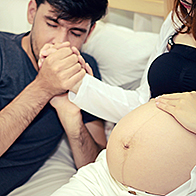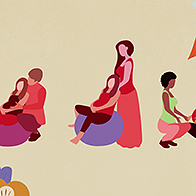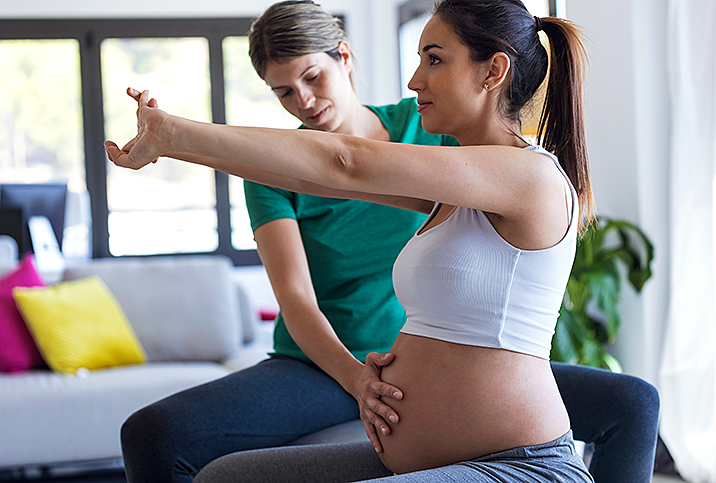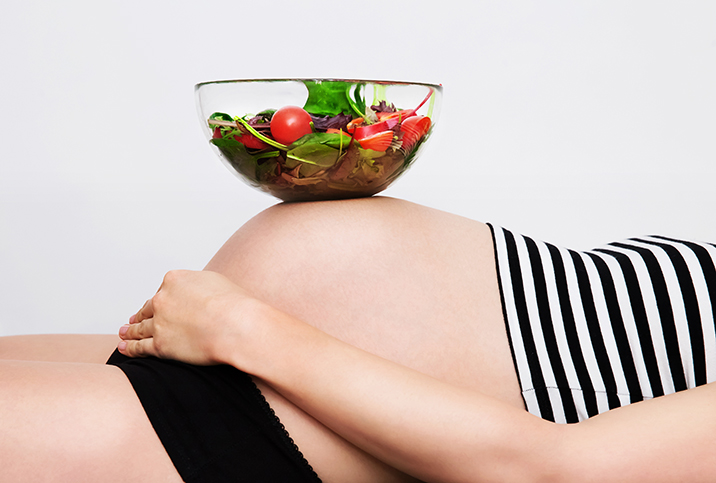Perineal Massage Should Be Part of Your Birth Plan

As the due date nears, expectant mothers are consumed with baby preparation, ensuring everything is set for the baby's arrival. Mothers may decide to attend a Lamaze or childbirth class. Some mothers will have a detailed birth plan to manage their preferences and expectations during labor and delivery. These are all good ways to mentally prepare yourself for the big day. For mothers who may also want to physically prepare themselves, perineal massages are a great way to strengthen the body for vaginal delivery.
Vaginal deliveries are the most prevalent type of childbirth and the least invasive. Though vaginal tissues are flexible, sometimes cuts (episiotomy), tears or lacerations occur during delivery. It's fairly common for these injuries to occur, especially with first-time mothers.
Perineal massages are incredibly beneficial for vaginal birth preparation, but they also can be used in other ways.
Between 40 percent and 80 percent of mothers will experience a tear in the perineum, the area between a woman's vulva and anus. Almost two-thirds of them will require suturing. This area of tissue is significant as it's attached to the muscles that support a woman's pelvic floor. Normally, the area is repaired post-delivery and heals quickly with no long-term problems due to its rich blood supply. But sometimes, perineal trauma can be long-term, with some women experiencing pain and discomfort during intercourse, incontinence, uterine prolapse and mental health issues afterward.
Additionally, perineal damage takes time to heal and coincides with the early weeks of motherhood, which is already a difficult time as women are adjusting to life with a newborn. Perineal massages during the last few weeks of your pregnancy can help alleviate the onset of long-term complications postpartum and shorten recovery time.
Perineal massages are incredibly beneficial for vaginal birth preparation, but they also can be used in other ways. Heather Jeffcoat, DPT, a pelvic health specialist, said, "It can be used on anyone who experiences painful insertion—either with a tampon, toy or with intercourse—to desensitize sensitive vulvovaginal tissue, and relax and lengthen the pelvic floor muscles."
What exactly is a perineal massage?
Vaginal tissues are soft and elastic, which allows them to stretch during delivery. However, perineal tissues aren't as flexible as vaginal tissues, so they don't stretch as much during delivery. This is why perineal trauma is a fairly common occurrence. Perineal massages involve "gentle, manual stretching of the tissues that shape the birth canal," according to the American Pregnancy Association (APA). Those tissues include the pelvic floor and muscles.
These massages help improve perineal tissue flexibility, relax the area and prepare the tissues to expand naturally. When the perineal muscles are manipulated through this technique, it stretches the perineum enough for childbirth so the baby moves through the birth canal more smoothly. The goal of perineal massage is to reduce tearing and scarring and shorten the healing process post-delivery.
Performing a perineal massage
When to begin
You should begin perineal massages during the final few weeks of your pregnancy. According to Caitlin Goodwin, MSN, R.N., a board-certified nurse-midwife, women should start performing them at around 34 weeks. Before beginning this process, talk with your OB-GYN or midwife to get the green light on the optimal time to start. They can also provide additional information and helpful tips for performing the massages.
How it's done
Perineal massages can be performed by yourself or with your partner, and, thankfully, they're easy to do. Goodwin stated that massages can be done "as few as twice a week or as frequently as every evening."
Your health practitioner can guide you here on how often would be best for you. The massage shouldn't last longer than a few minutes. Don't be discouraged if you miss a few days once you establish your routine. The optimal time to perform them would be during or after a bath or shower. The blood vessels will be dilated, making the perineum softer and easier to massage.
The steps for performing a perineal massage are:
- First, wash your hands.
- Rub a lubricant (that can be used internally) on your thumbs.
- Place thumbs (index and middle finger can be used as well) just inside the vagina and press downward toward the rectum. Hold for one to two minutes. You might feel a burning or stretching sensation.
- Then, slowly massage the lower half of your vagina for two to three minutes maximum, gently moving back and forth between four o'clock and eight o'clock while still pressing downward.
For lubricants, Goodwin recommends an oil, such as coconut or olive oil. These natural-based oils are best for genital massages and are safe for the vagina. As you perform the massage, it is helpful to practice slow, deep-breathing techniques. They will aid in relaxing your body and begin to prepare your mind for birth. Mindy Cockeram, a Lamaze-certified childbirth educator, explained that "this [massage] should feel similar to the inside of a large rubber band. Expect [it] to be somewhat uncomfortable, but not hurt. If there is pain, you are doing it too vigorously."
How effective are perineal massages?
The effectiveness of perineal massage varies from woman to woman. A recent study in the Journal of Midwifery & Women's Health showed that first-time mothers, women over 30, and women who've had previous episiotomies have fewer tears and less severe tears when perineal massages were performed.
Perineal massages are associated with a lower risk of severe perineal trauma and postpartum complications.
Ethnicity may also play a part in perineal damage. Jeffcoat explained: "Asian and African American women show increased risk of severe perineal tearing." Therefore, this method could be particularly beneficial in damage prevention for women in these groups. This technique does work better for some women than others, but overall, perineal massages are an excellent tool for expectant mothers against perineal damage during delivery.
What are the benefits of this method?
Studies are still inconclusive on the effectiveness of perineal massages on first-degree (a rip in the top layer of tissue) and second-degree (an injury that extends deeper into the muscular tissue) tears. However, a 2020 comprehensive study concluded that perineal massages are associated with a lower risk of severe perineal trauma and postpartum complications. Perineal massage can also have the following benefits:
- Prepares the perineal muscles and tissues. The massage provides more blood flow to the area, helping stretch the skin and muscles to provide more ease during delivery.
- Reduces risk of major tearing. Cockeram stated that these massages minimize the possibility of severe tears.
- Reduces the risk of episiotomy.
- Reduces the need for stitches.
- Helps with scar tissue, especially for women who have had prior injury or have a rigid perineum.
- Helps mentally prepare you for birth. The massages give you an idea of the sensations you may experience during childbirth when you're stretching the area. Doing breathing exercises alongside the massages helps you focus on relaxing, mentally preparing you for delivery.
- Helps prevent postpartum complications, such as painful or uncomfortable intercourse, incontinence and uterine prolapse.
These massages are multifunctional but can be particularly useful for pregnant women. As you prepare yourself for childbirth, consider perineal massages as a way to ready your mind and body for the arrival of your child.




















